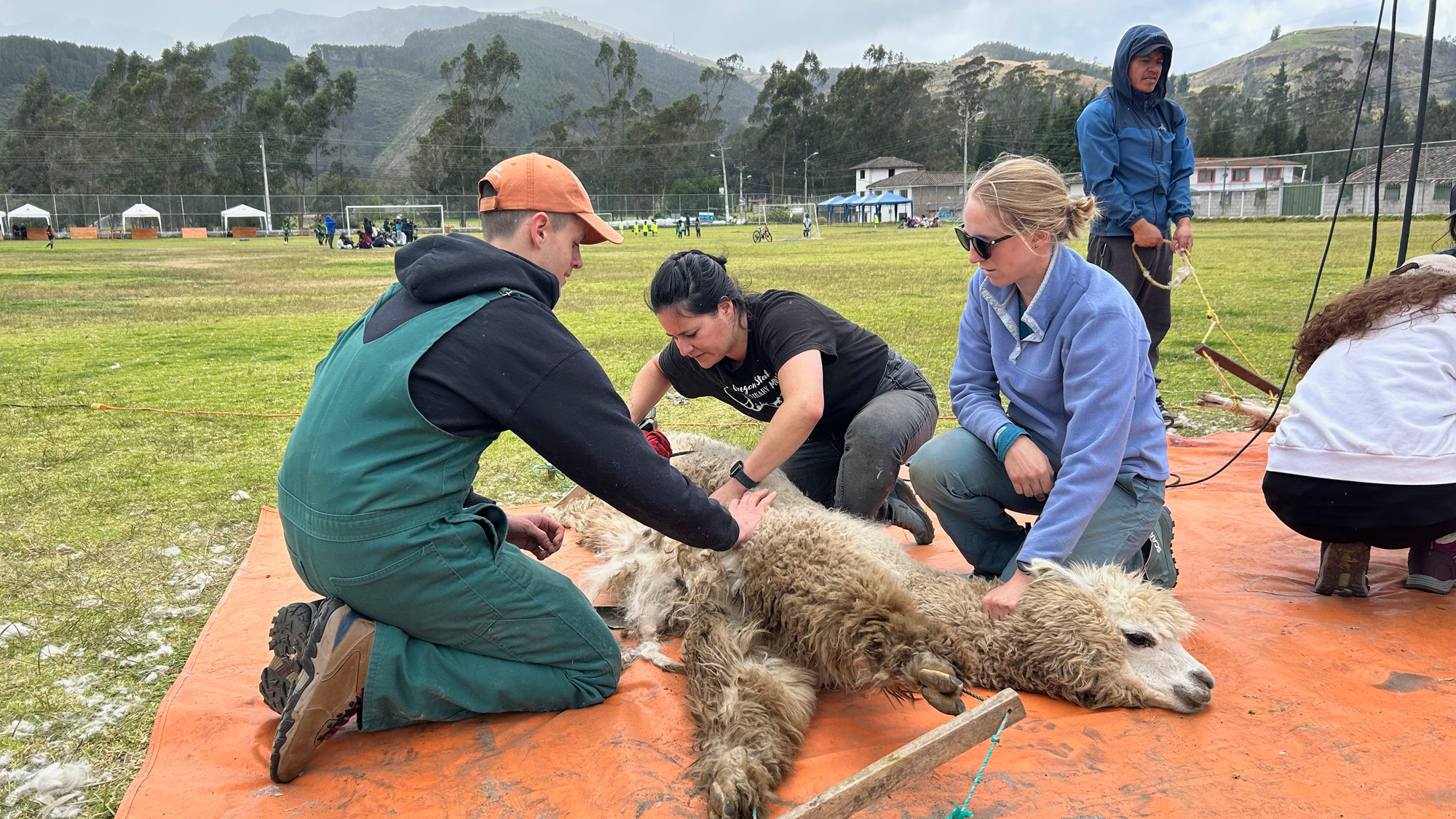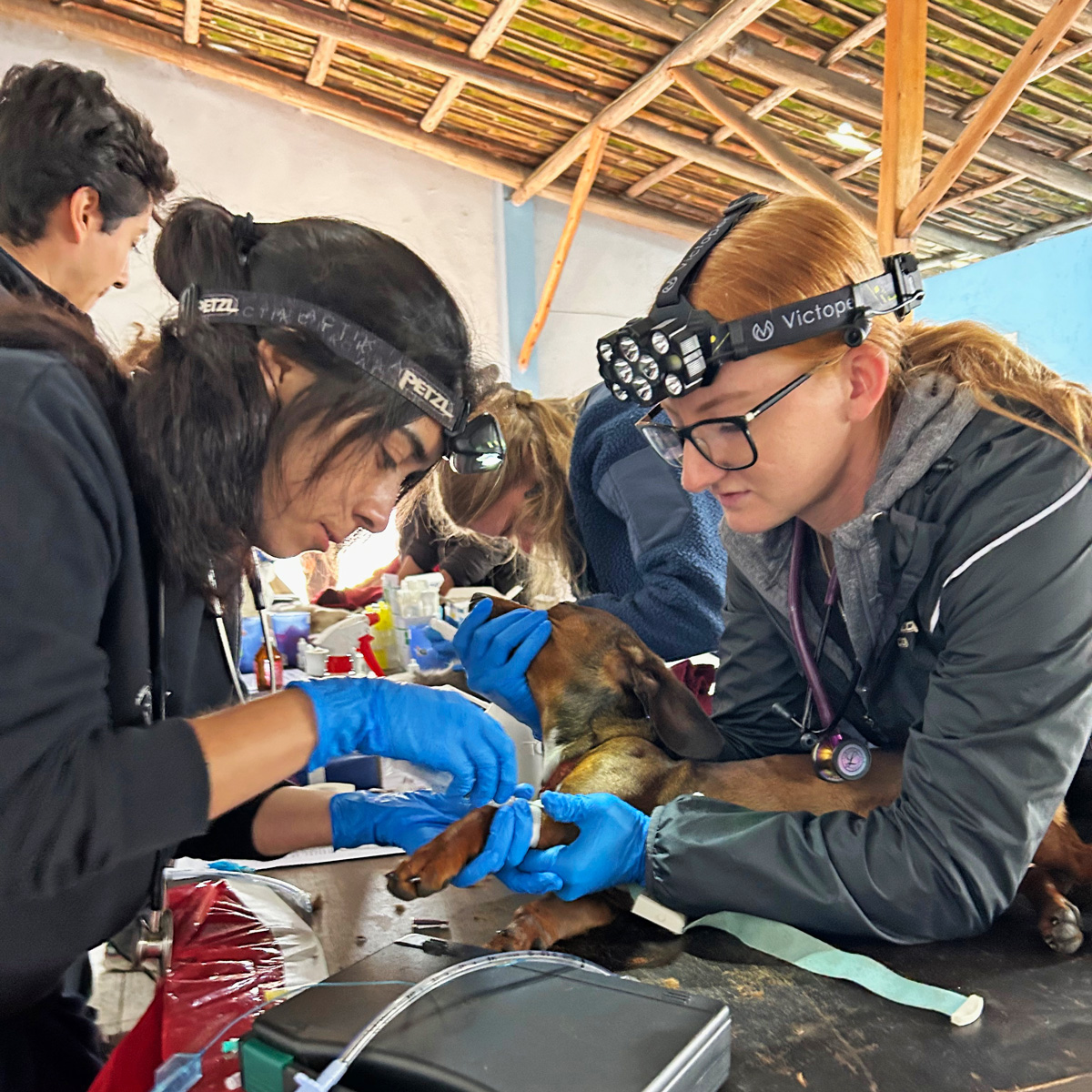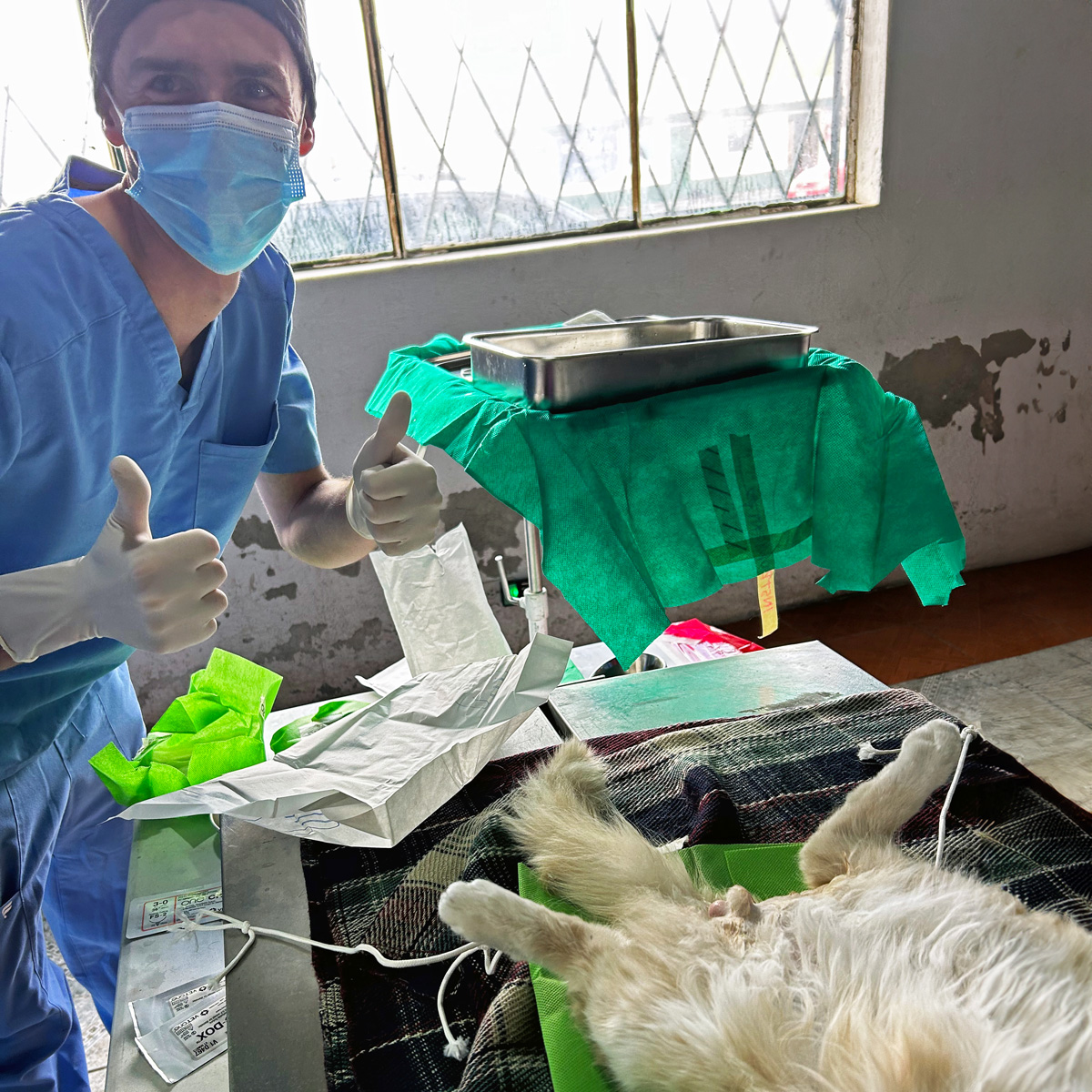Q&A
What were the communities like that you served in?
Gaby Herrera
They are up in the mountains, rural, low-income communities that do not have easy access to medical or veterinary care.
Why did you want to go on this trip?
Gaby Herrera
Because I enjoy merging my passion for animal medicine and welfare and helping people that are in need. Furthermore, I love seeing how things are done in other countries in medicine and the culture overall.
Danny Capasso
To learn about different cultures and provide veterinary services to underserved communities.
Can you describe the partnership with Universidad San Francisco de Quito and the benefits of that partnership?
Gaby Herrera
The partnership with the university opens the door for U.S. students to work with Ecuadorian veterinarians and get exposure to how they do things. They also take care of the logistics for the US students by arranging meals, lodging and transportation, making it smooth and stress free for the students attending the program. A portion of the fees goes to help the wildlife veterinary teaching hospital in Ecuador which recently lost a big portion of their funding.
Dr. Bree Beechler
We worked with USFQ veterinarians and veterinary students directly for the spay and neuter clinic. Ecuador has a problem with dog and cat overpopulation and so USFQ runs spay and neuter campaigns in villages throughout the country. We were given the opportunity to work with them, which was amazing to be a part of. USFQ also arranges the other veterinary activities, based on partnerships they have throughout the country.
What types of veterinary care did you provide?
Gaby Herrera
Conservation efforts for wildlife, sheared alpacas, spay and neuter campaigns (for dogs and cats, plus vaccinations), horse dentals, deworming of cattle and horses.
What species did you see?
Gaby Herrera
Andean condor, wildlife rescued from illegal trade like monkeys, and birds, dogs, cats, horses, cows and alpacas.
What was the total number of animals you treated?
Gaby Herrera
210 dog and cat sterilizations, 250 rabies vaccinations, 9 horse dentals, 17 alpacas sheared, 34 cattle and 16 horses dewormed.
What case(s) stood out to you, and why?
Gaby Herrara
One of my favorite things is the Andean condor watching and educational days. I think this is important because it educates people on the current conservation issues that are happening around the world and the different challenges they face due to the differences in cultures and traditions. It also illustrates the reason our contribution in the spay and neuter campaigns are so valuable because the dog and cat population are a big threat to wildlife.
Dr. Bree Beechler
During the spay and neuter clinic people in the communities were so grateful to have access to care to help reduce the overpopulation of pets. I also really enjoyed watching the students interact with Ecuadorian veterinarians and students and develop confidence as the clinic went on. I also really was impressed watching the Ecuadorian veterinarians perform so many spay and neuter surgeries so quickly. The lateral approach they use to surgery allows them to quickly perform spays, while also reducing the size of the incision used. They were well-practiced and very good at their job.
What did this experience bring to your education?
Gaby Herrera
It definitely made me feel more comfortable with surgery, prep and recovery. It also was fun to work more hands on with alpacas.
Danny Capasso
It allowed me to practice practical skills such as IV catheter placement and intubation. Because of the high volume spay and neuter environment, it also helped me get over anxiety that I had associated with monitoring anesthesia. I also learned about alternative spay and neuter techniques.
Would you participate in this type of trip again, and why?
Danny Capasso
Yes. It was amazing meeting new people, gaining hands-on experience, and most importantly providing veterinary care to underserved communities. I want to continue to volunteer my time as a veterinarian to provide services that people otherwise wouldn’t have.



